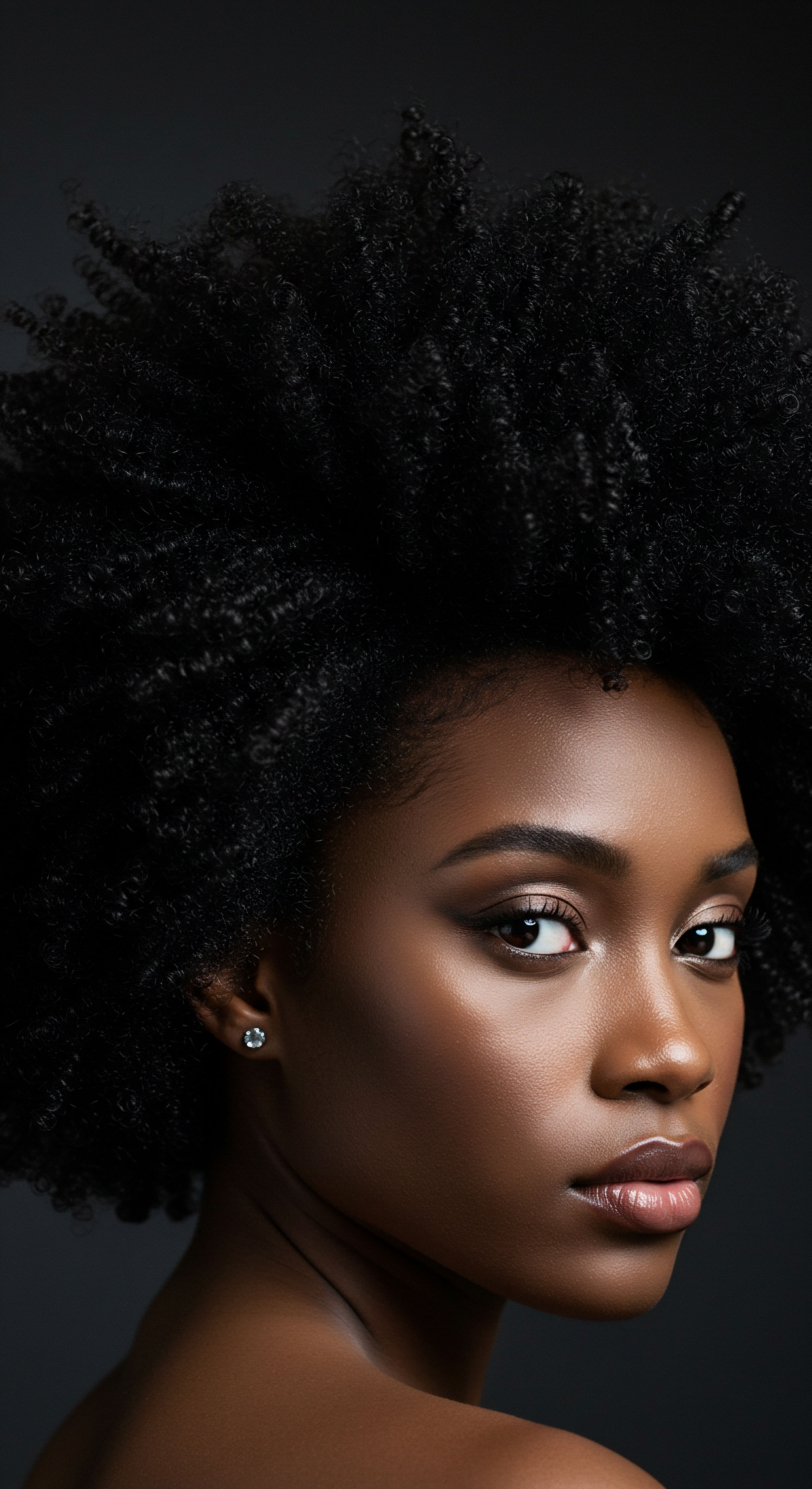
Roots
The gentle hum of water flowing from our taps, a seemingly benign presence in our daily routines, holds within its clear depths a hidden story for our coiled strands. For those of us with textured hair, a whisper of concern often accompanies each wash day, a subtle question about the water’s unspoken impact. We stand at the basin, fingers sifting through curls, sensing a subtle shift, a different feel to the hair than we remember from other places, other times.
This quiet observation, this almost unconscious connection to the elemental, beckons us to look closer at the very foundation of our hair’s existence and its relationship with the water that graces it. It is a quest to understand the unseen forces at play, to unravel the subtle yet persistent effects of mineral content on the long-term strength and vitality of our unique hair patterns.
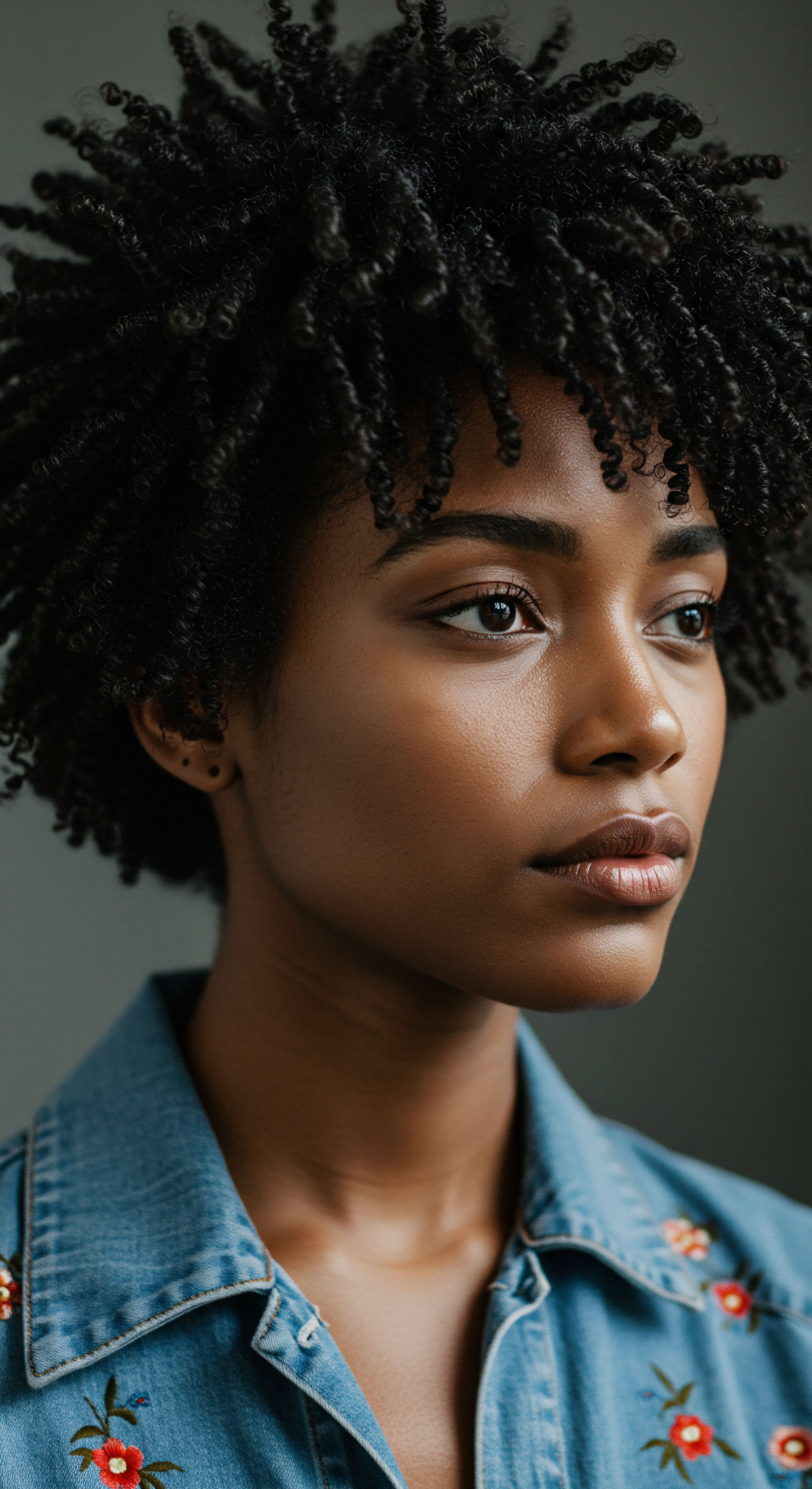
The Architecture of Coiled Strands
To truly appreciate how water’s mineral composition might influence our hair, we must first recognize the inherent characteristics of coiled strands. Unlike straight or wavy hair, textured hair possesses a distinctive helical structure. This spiral form, while beautiful and versatile, also presents unique challenges and points of vulnerability. The cuticle, the outermost protective layer of each hair shaft, consists of overlapping scales, similar to shingles on a roof.
In coiled hair, these scales tend to be more lifted and open, particularly at the curves and bends of the coil. This natural openness means coiled strands can be more susceptible to environmental factors, including the quality of the water used for cleansing. Beneath the cuticle lies the Cortex, the primary determinant of hair’s strength and elasticity. This inner layer is composed of keratin proteins, a complex network held together by various bonds, including disulfide, hydrogen, and ionic bonds.
The integrity of these bonds is paramount to the hair’s resilience and its ability to resist breakage. A healthy cortex means a strong, supple strand, capable of stretching and returning to its original form. A compromised cortex, conversely, leads to brittleness and vulnerability.

Water’s Mineral Signatures
Water, in its natural state, is rarely pure H₂O. As it journeys through the earth, it gathers dissolved minerals from the surrounding rock and soil. The most common culprits contributing to “hardness” in water are calcium and magnesium ions.
These bivalent cations, with their positive charges, are particularly adept at interacting with negatively charged surfaces, such as the hair shaft. Other trace metals, like copper and iron, can also be present, albeit typically in smaller concentrations, and can contribute to concerns for hair health.
The concentration of these minerals varies significantly across different geographical regions. For instance, approximately 60% of the UK experiences hard water, with the South East and East of the country having particularly high levels, while regions like Scotland tend to have softer water. This geographical variability means that the daily experience of washing hair can differ profoundly from one locale to another, creating a silent, often unrecognized, environmental factor in hair care. The perception of water’s “softness” or “hardness” often becomes apparent through its interaction with soap; hard water makes it more difficult for shampoo to lather properly, leaving a film or residue.

The Initial Interaction Mineral Buildup on Hair
When hard water meets hair, especially coiled hair with its naturally raised cuticles, the dissolved minerals begin to deposit onto the hair shaft. Calcium and magnesium ions, being positively charged, are drawn to the negatively charged surface of the hair. This adherence creates a microscopic film, a mineral coating that, over time, can accumulate.
This mineral layer can obstruct the hair’s natural hydration process, preventing water and moisturizing products from fully penetrating the hair shaft. For coiled hair, which often already tends towards dryness due to its structural characteristics, this reduced moisture absorption can be particularly problematic.
This initial coating does not immediately equate to a loss of strength, but it sets the stage for potential long-term issues. The presence of these mineral deposits can make the hair feel rough, dull, and less supple. It can also interfere with the effectiveness of hair care products, making it seem as though conditioners are not working as they should, or that shampoo is difficult to rinse completely clean.
The elemental truth is that water’s mineral content silently shapes the very foundation of our coiled strands.
The journey of water through earth, gathering its mineral companions, creates a unique signature that interacts with the distinct architecture of textured hair. This interaction, though often imperceptible in its earliest stages, begins a subtle transformation of the hair’s surface, laying down a foundation of mineral deposits that will, over time, play a larger role in the strand’s overall vitality and resilience.

Ritual
Stepping into the wash day ritual, we often seek not just cleanliness, but a sense of renewal for our hair. For those with coiled strands, this practice is a sacred moment, a time for tender care and deliberate action. Yet, beneath the surface of our cherished routines, the very water we use can hold a secret influence, quietly reshaping the long-term strength of our hair.
The question of water’s mineral content and its enduring impact on coiled strands invites us to reconsider our daily practices, to look beyond the immediate sensation of cleansing and towards the subtle, persistent forces that govern our hair’s health over time. It is a call to align our rituals with a deeper understanding of our hair’s unique needs, recognizing that even the most gentle touch can be affected by the invisible properties of the water itself.

The Daily Dance with Minerals
The recurring exposure of coiled hair to mineral-rich water can lead to a progressive accumulation on the hair shaft. This phenomenon, often referred to as “hard water buildup,” creates a physical barrier that hinders the hair’s natural functions. When minerals coat the strands, they prevent the hair’s natural oils from reaching the cuticle, leading to a feeling of dryness and increased frizz.
For textured hair, which naturally produces less sebum than straight hair, this additional impediment to moisture distribution can be particularly detrimental. The hair cuticles, already prone to being more open in coiled patterns, can become further lifted and roughened by the mineral deposits, diminishing the hair’s natural shine and leaving it looking dull and lifeless.
The impact extends beyond mere aesthetics. The physical presence of mineral deposits can alter the hair’s natural texture, making it feel coarse and less pliable. This change in texture can, in turn, make coiled strands more prone to tangling and breakage during styling or even routine manipulation. The effort required to detangle hair coated in minerals can place undue stress on the strands, potentially leading to mechanical damage over time.
Moreover, the minerals can react with the hair’s protein structure, specifically interacting with the negatively charged cysteine residues within the keratin chains. This interaction can compromise the hair’s integrity, potentially weakening the bonds that contribute to its strength.
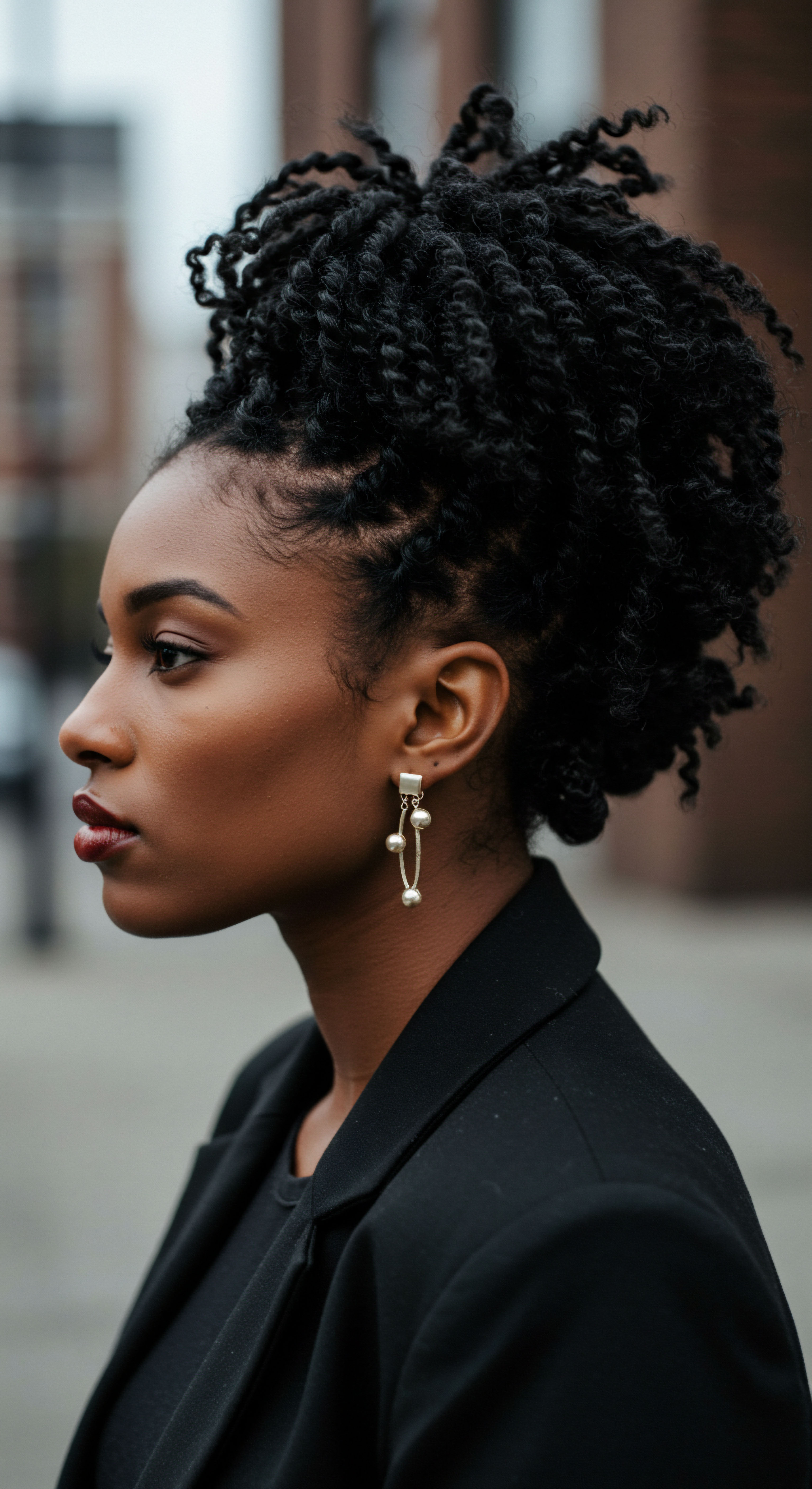
Cleansing and Conditioning in Hard Water Environments
The effectiveness of our cleansing and conditioning agents is directly affected by water’s mineral content. Hard water reduces the ability of shampoos to lather properly, necessitating the use of more product to achieve a perceived clean. This can leave behind a residue, exacerbating the problem of buildup.
Conditioners, designed to moisturize and smooth the hair, may also struggle to penetrate the mineral barrier, rendering them less effective. This can lead to a cycle where hair feels dry and brittle, prompting the use of more conditioning products, which then struggle to work against the mineral coating.
To counteract these effects, specific approaches become necessary:
- Chelating Shampoos ❉ These specialized shampoos contain ingredients like EDTA (ethylenediaminetetraacetic acid) or sodium gluconate that are designed to bind with and remove mineral ions from the hair and scalp. Regular use can help strip away accumulated deposits, allowing hair to absorb moisture and products more effectively.
- Acidic Rinses ❉ A diluted acidic rinse, such as apple cider vinegar, can help restore the scalp’s natural pH balance and dissolve some mineral deposits. Hair has a slightly acidic pH (around 4.5-5.5), and hard water often has a higher pH, which can disrupt this natural balance, leading to irritation and flakiness.
- Water Softeners or Filters ❉ For a comprehensive solution, installing a water softener or a shower filter can significantly reduce the mineral content of the water used for washing. This preventive measure minimizes mineral deposition from the outset, preserving the hair’s natural state.

Protective Practices and Product Choices
For individuals with coiled hair in hard water areas, adopting certain protective practices can lessen the long-term impact:
- Rinse Thoroughly ❉ Even with chelating products, ensuring a very thorough rinse helps remove as much loosened mineral and product residue as possible.
- Deep Conditioning ❉ Regular deep conditioning treatments, perhaps weekly or bi-weekly, can help replenish moisture and fortify the hair against the drying effects of mineral buildup. Choosing conditioners with humectants and emollients can aid in drawing and sealing moisture into the hair shaft.
- Leave-In Conditioners and Sealants ❉ Applying leave-in conditioners and then sealing with an oil can create an additional barrier, helping to protect the hair from environmental exposure and retain moisture.
Our wash day practices, when attuned to water’s mineral presence, become a gentle shield for our coiled strands.
The choice of products and the mindful execution of cleansing rituals are not merely about aesthetics; they represent a purposeful defense against the gradual accumulation of minerals that can compromise the very strength and vitality of coiled hair over time. By adapting our routines, we honor our hair’s unique needs, ensuring its resilience in the face of environmental challenges.
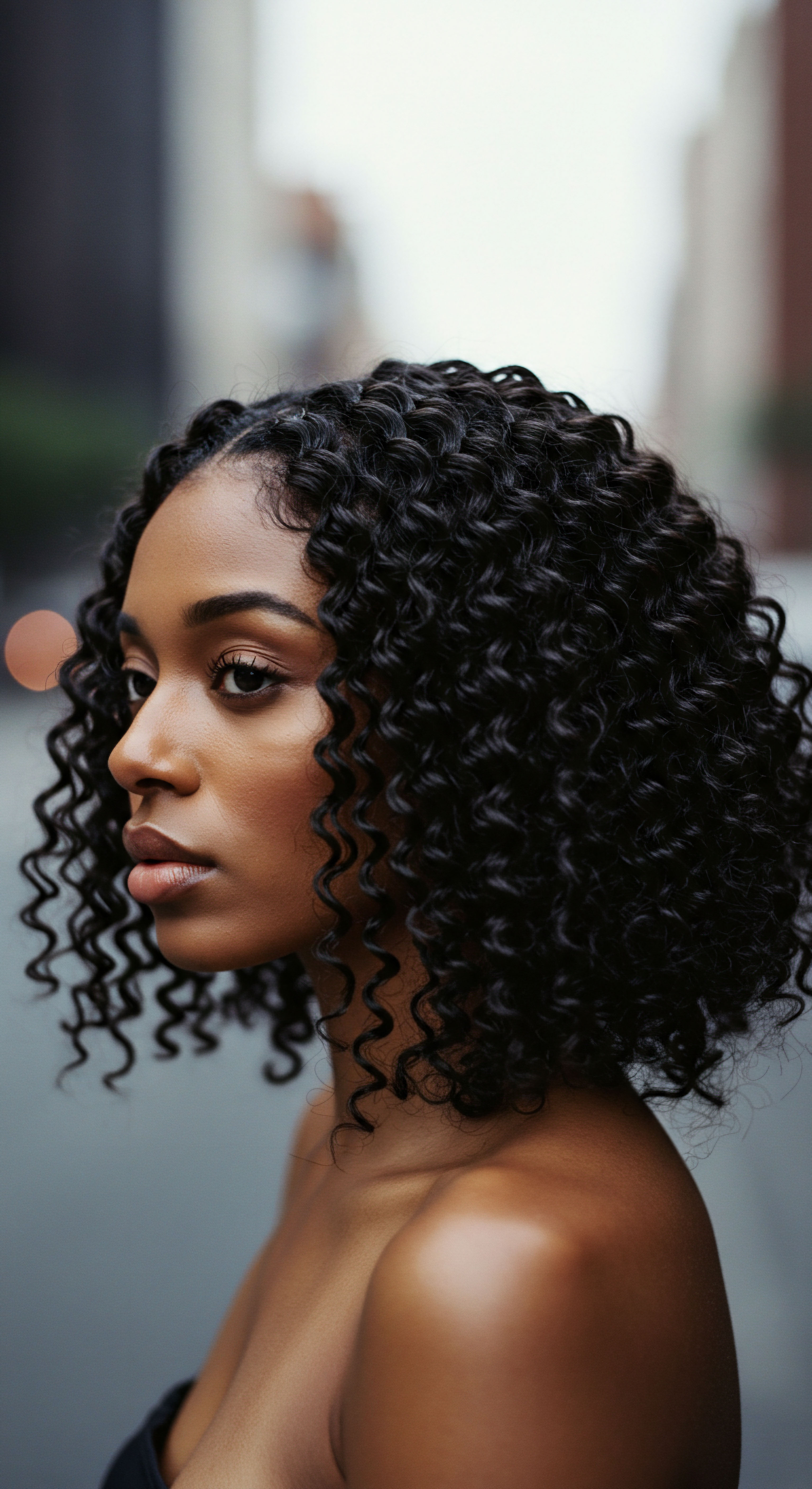
Relay
Beyond the visible effects and daily adjustments, a deeper question persists ❉ can the mineral content of water truly alter the long-term structural strength of coiled strands? This query beckons us into a realm where the microscopic meets the macroscopic, where the subtle chemistry of water intersects with the enduring resilience of our hair. It is a space where scientific inquiry, cultural wisdom, and lived experience converge, inviting us to understand the profound interplay of forces that shape the very fiber of our being. We seek not simple answers, but a comprehensive understanding, one that acknowledges the complex, interconnected nature of hair health and its environmental influences.
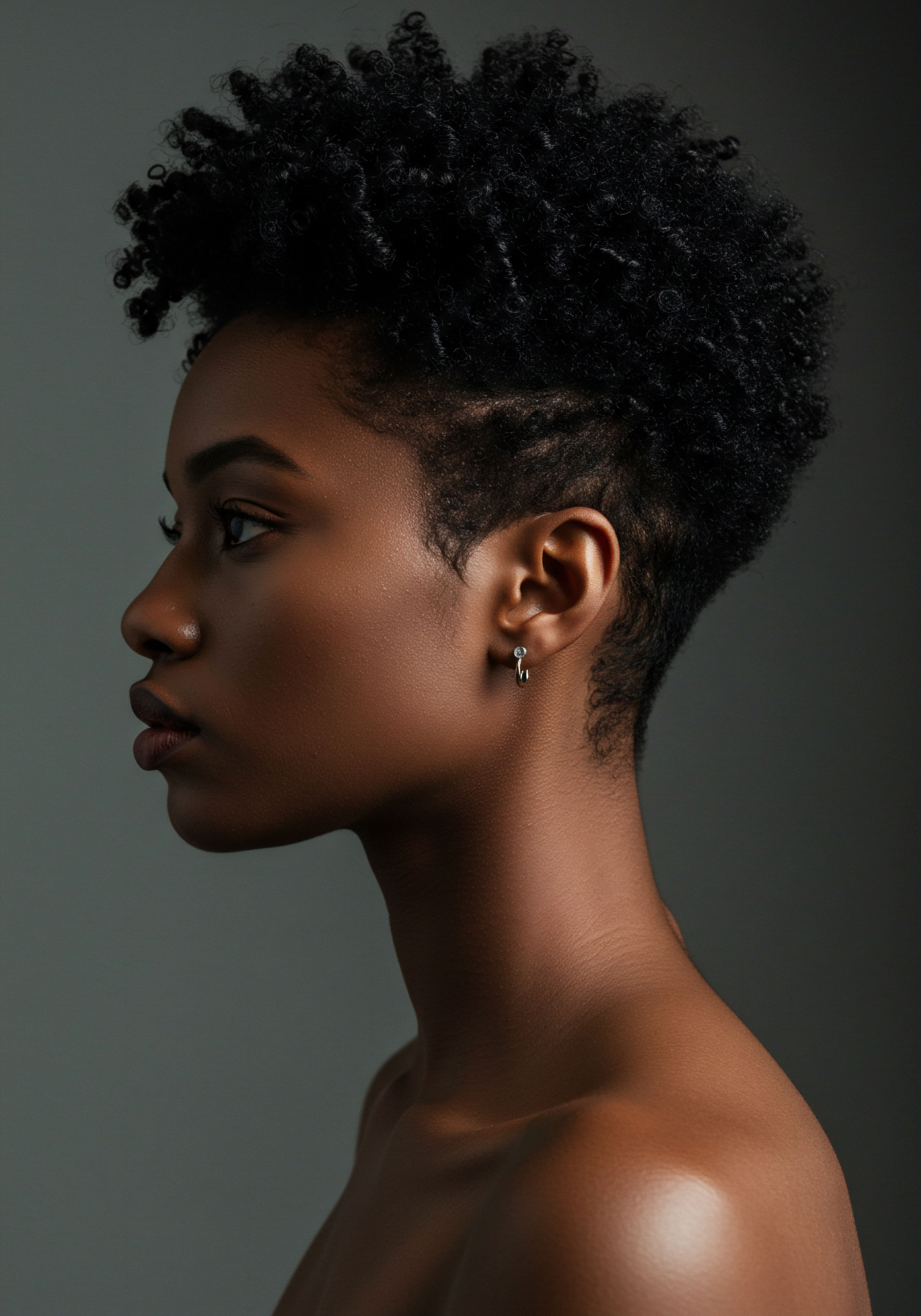
The Silent Erosion of Structural Integrity
The notion that water’s mineral content might erode the long-term strength of coiled strands is not a mere anecdotal observation; it finds footing in the intricate dance of chemistry and hair biology. While initial studies might suggest no immediate significant difference in tensile strength or elasticity between hair washed in hard versus soft water over short periods, the cumulative effect over months and years tells a different story. The minerals, primarily calcium and magnesium, do not simply sit inertly on the hair’s surface. They react with the hair’s protein structure.
Calcium ions, with their positive charge, are drawn to the negatively charged surface of the hair shaft, particularly where the cuticles are more lifted, as is common in coiled hair. This binding can cause the cuticles to lift further, making the hair more porous and susceptible to damage.
Internally, the continuous deposition of calcium can lead to a stiffening of the hair shaft, compromising its inherent elasticity. This rigidity makes the hair more prone to breakage and split ends, especially during routine manipulation like detangling or styling. Moreover, trace metals like copper and iron, even in small amounts, can react with the hair’s proteins and, significantly, with chemical services like coloring or bleaching, leading to greater protein damage.

A Controversial Finding on Tensile Strength
While some early studies, such as one conducted by Srinivasan and Chakravarthy Rangachari in 2016, found no significant difference in the elasticity and tensile strength of hair treated with hard water versus soft water over a 30-day period, a later study by Luqman and colleagues in 2018 presented a compelling, contrasting perspective. This 2018 study, involving 70 male participants with straight hair, observed a statistically significant reduction in the tensile strength of hair samples treated with hard water compared to those treated with deionized (soft) water. The average tensile strength for hair treated with hard water was recorded at 234.16 N/mm², while hair treated with deionized water showed an average of 254.84 N/mm². This finding suggests that, at least under the conditions of this particular research, hard water can indeed diminish the inherent strength of hair fibers.
This difference in findings across studies underscores the complexity of hair science and the need for more long-term, diverse investigations, particularly those focused on the unique characteristics of coiled hair. The longer exposure times in the Luqman study, compared to some earlier research, may hint at the cumulative nature of hard water’s impact.
| Study Srinivasan & Rangachari (2016) |
| Water Type Hard vs. Distilled |
| Average Tensile Strength (N/mm²) 105.28 (Hard) vs. 103.66 (Distilled) |
| Significance No statistical difference (P = 0.858) |
| Study Luqman et al. (2018) |
| Water Type Hard vs. Deionized |
| Average Tensile Strength (N/mm²) 234.16 (Hard) vs. 254.84 (Deionized) |
| Significance Significant difference (P = 0.001) |
| Study These studies highlight differing conclusions on hard water's effect on hair tensile strength, suggesting the need for further research on diverse hair types and longer exposure durations. |

How do Mineral Deposits Alter Hair’s Molecular Bonds?
The structural integrity of hair relies on three primary types of bonds ❉ hydrogen, ionic, and disulfide bonds. While hydrogen bonds are easily broken by water and heat, reforming as hair dries, ionic bonds are affected by pH changes, and disulfide bonds are the strongest, typically broken by chemical treatments. Mineral ions from hard water, particularly calcium, are positively charged. The hair shaft, especially damaged areas, carries a negative charge.
This electrostatic attraction leads to mineral deposition. When calcium builds up, it can interfere with the hair’s natural moisture balance and even interact with the ionic bonds. The continuous presence of these minerals can alter the hair’s surface and potentially weaken the overall protein structure over time, making the hair less resilient.
The impact of minerals on hair’s molecular structure is a slow process, a gradual accumulation that, over years, can lead to perceptible changes in the hair’s long-term health. This cumulative effect is often more pronounced in coiled hair due to its unique structural characteristics, which allow for greater mineral adhesion and reduced moisture retention.
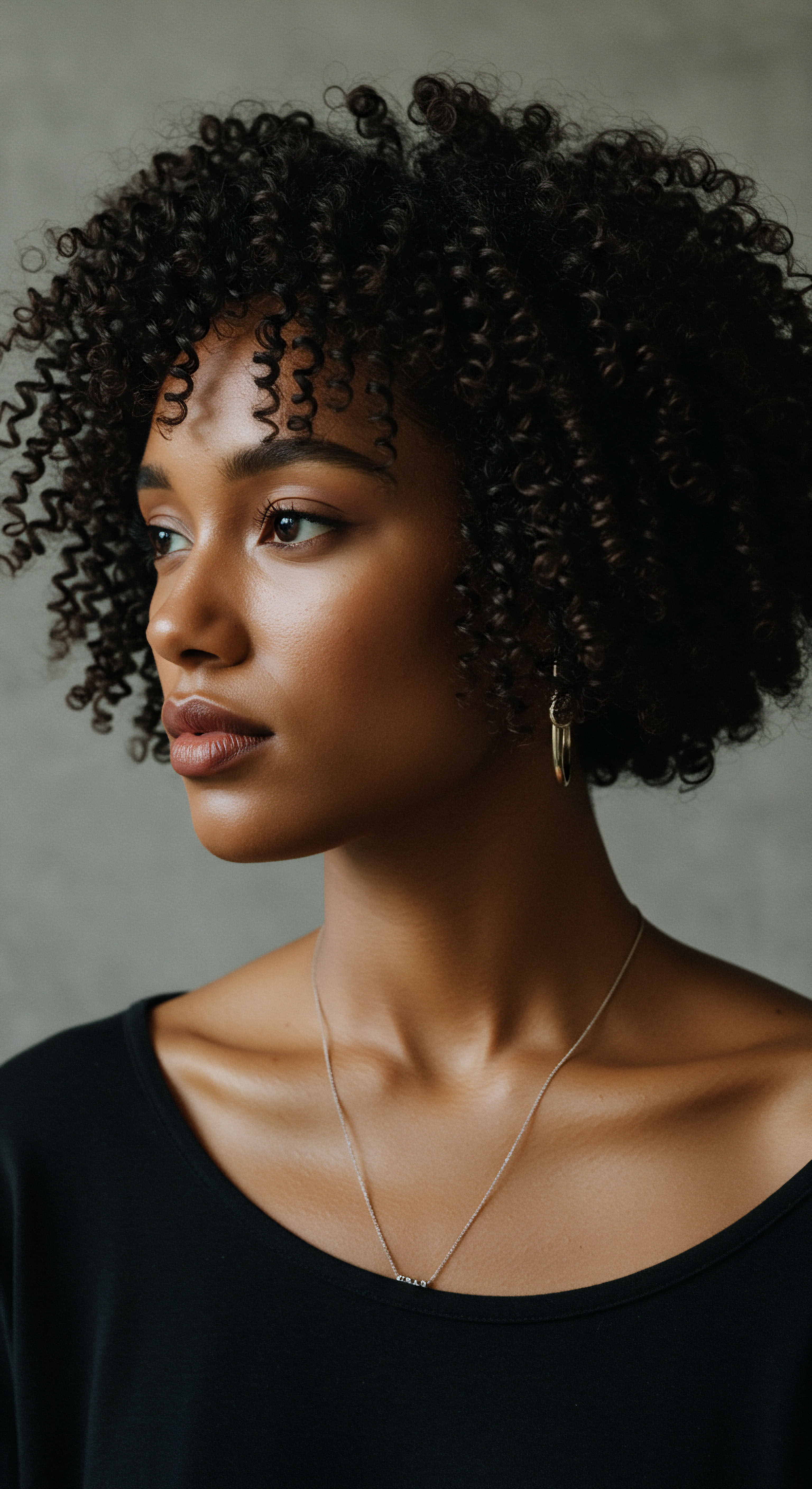
The Cultural Echoes of Water and Hair
Beyond the scientific lens, the relationship between water quality and hair care resonates deeply within cultural practices across the globe. For centuries, communities have intuitively understood the properties of their local water sources and adapted their hair rituals accordingly. In ancient China and Japan, for example, women used fermented rice water, rich in vitamins and minerals, to rinse their hair, believing it promoted strength and luster. This practice was not merely aesthetic; it was often rooted in a deep understanding of natural resources and their benefits.
Similarly, historical accounts from medieval Europe indicate that while modern shampoo was absent, people still practiced hair cleansing, often using plant ashes mixed with water to create lye-based washes, or gentler remedies like egg yolks. These historical practices, often shaped by the available water sources and their inherent properties, underscore a long-standing human awareness of water’s role in hair health.
The Thai ethnic people, for instance, have a “Lung ta” (hair washing) ceremony, held at noon on the last day of the twelfth lunar month, to wash out bad luck and pray for a happy new year. For this ritual, Thai women prepare a special shampoo by washing sticky rice and fermenting the rice water for at least a week, believing it makes hair smooth and shiny. This ritualistic use of specific water preparations for hair speaks to a cultural understanding of water’s transformative power, not just on a spiritual level, but also on the physical attributes of the hair itself.
The interplay of water’s minerals and hair’s delicate architecture paints a portrait of gradual alteration.
The nuanced understanding of water’s effect on hair strength extends beyond the laboratory, finding validation in the enduring traditions and adaptive practices of diverse cultures, each responding to the unique mineral signature of their local water sources. This deep connection between environmental elements and personal care rituals reminds us that our hair, in its very essence, is a product of its environment, shaped by the waters that touch it.

Reflection
As we conclude our exploration into the mineral content of water and its quiet yet persistent dialogue with coiled strands, we are left with a deeper appreciation for the unseen forces that shape our hair’s vitality. The journey has taken us from the microscopic architecture of the hair shaft to the broad strokes of cultural heritage, revealing that the water flowing from our taps is far more than a simple cleansing agent. It is a carrier of geological history, a silent partner in our hair care routines, and a subtle sculptor of our hair’s long-term strength.
Recognizing this intricate relationship allows us to approach our hair with a more informed and gentle hand, understanding that every drop holds a story, and every ritual a potential for either fortification or compromise. The path to truly resilient coiled strands, then, becomes one of mindful awareness, a continuous conversation between our hair and the elemental world around it.
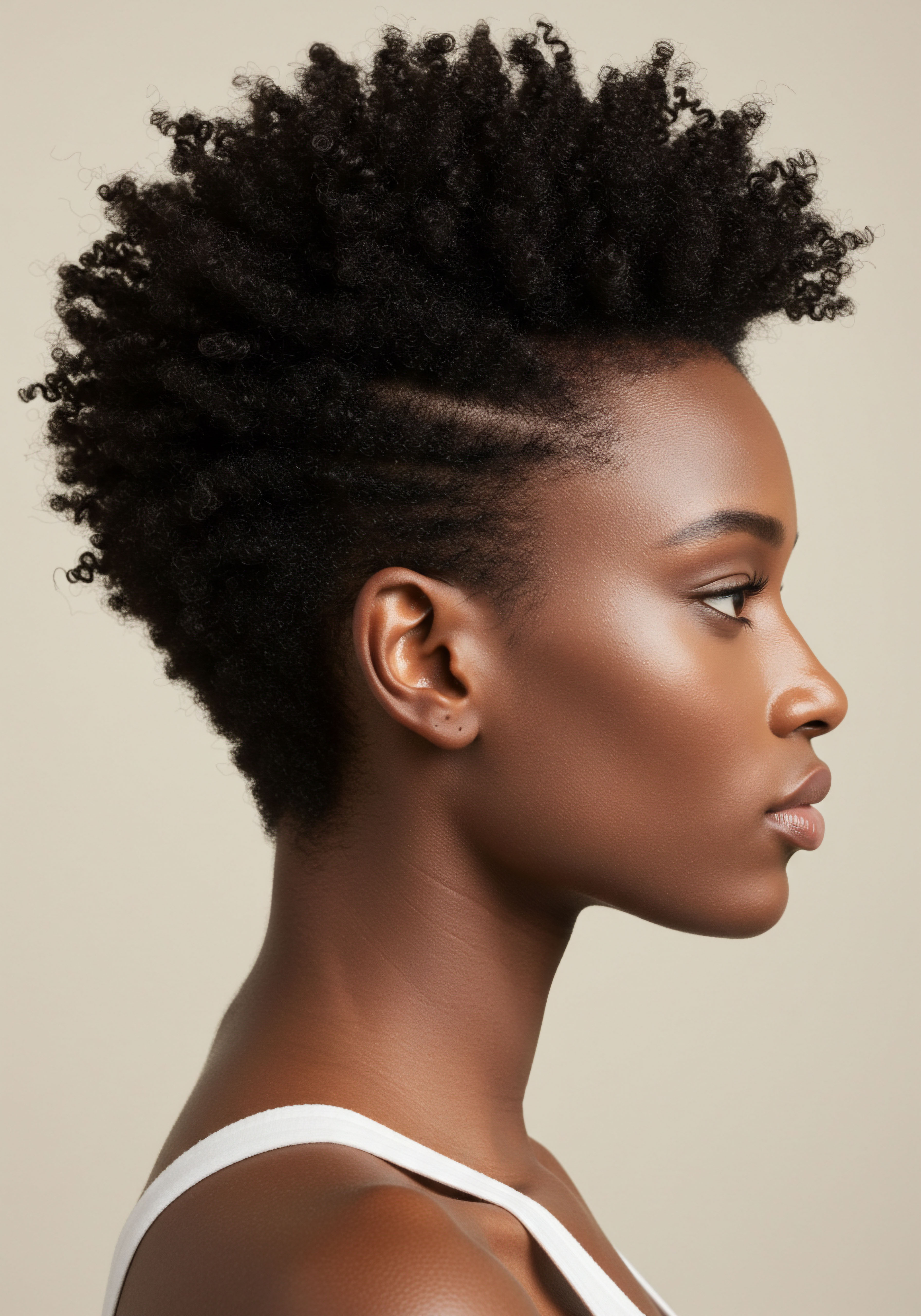
References
- Srinivasan, G. Chakravarthy Rangachari, S. (2016). Scanning electron microscopy of hair treated in hard water. International Journal of Dermatology, 55, e344-e346.
- Luqman, M. W. Ramzan, M. H. Javaid, U. Ali, R. Shoaib, M. & Luqman, M. A. (2018). To Evaluate and Compare Changes in Baseline Strength of Hairs after Treating them with Deionized Water and Hard Water and its Role in Hair Breakage. International Journal of Trichology, 10(3), 113–117.
- Gavazzoni Dias, M. F. (2015). Hair Cosmetics ❉ An Overview. International Journal of Trichology, 7(1), 2.
- Robbins, C. R. (2012). Chemical and Physical Behavior of Human Hair (5th ed.). Springer.
- Evans, A. Evans, D. & Russell, C. (2011). The Effects of Water Hardness on Hair. Journal of Cosmetic Science, 62(5), 455-463.
- Morgan, G. T. & Drew, H. D. K. (1920). CLXXVI.—Researches on co-ordination compounds. Part II. Cobaltic salts of ethylenediamine. Journal of the Chemical Society, Transactions, 117, 1456-1466.
- Miller, A. L. (1998). Dimercaptosuccinic Acid (DMSA), a Non-Toxic, Water-Soluble Metal Chelator. Alternative Medicine Review, 3(3), 199-204.
- Komatsu, F. et al. (2011). A High Accumulation of Hair Minerals in Mongolian People ❉ 2nd Report; Influence of Manganese, Iron, Lead, Cadmium and Aluminum to Oxidative Stress, Parkinsonism and Arthritis. Current Aging Science, 1(1), 76-80.
- Chung, J. H. & Yum, K. S. (2012). Correlation of Hair Mineral Concentrations with Insulin Resistance in Korean Males. Biological Trace Element Research, 150(1-3), 12-16.
- Song, C. H. et al. (2007). Associations of Calcium and Magnesium in Serum and Hair with Bone Mineral Density in Premenopausal Women. Biological Trace Element Research, 118(1), 1-8.